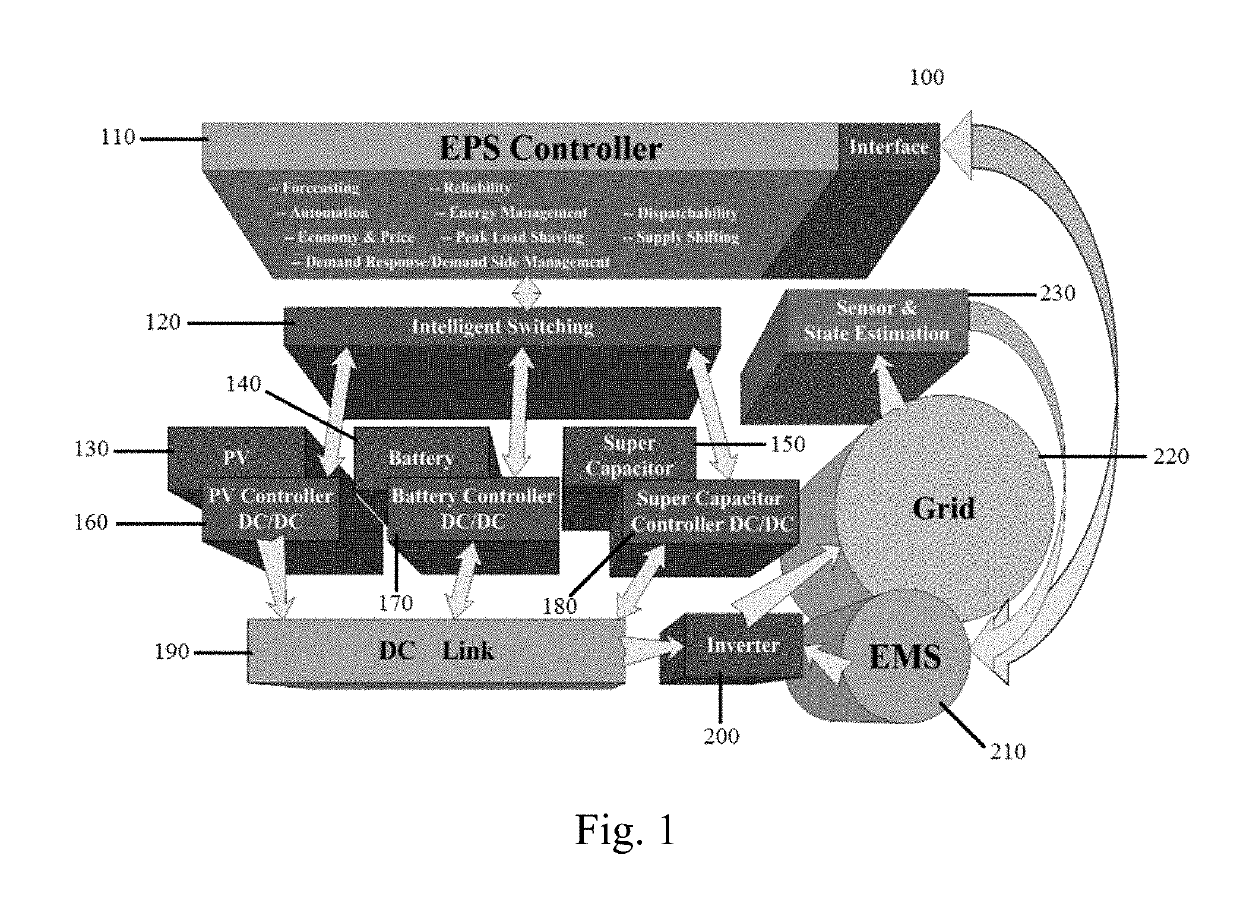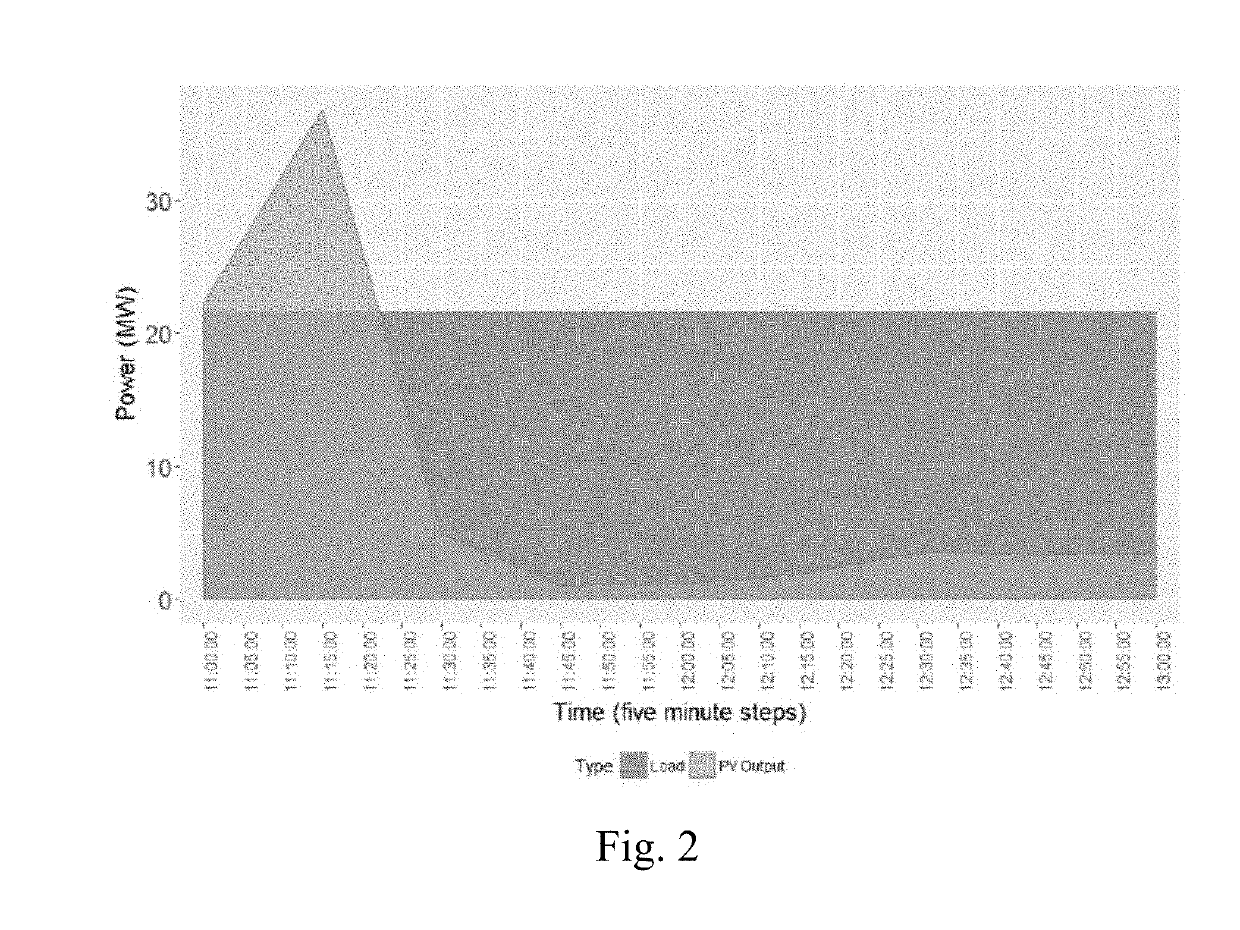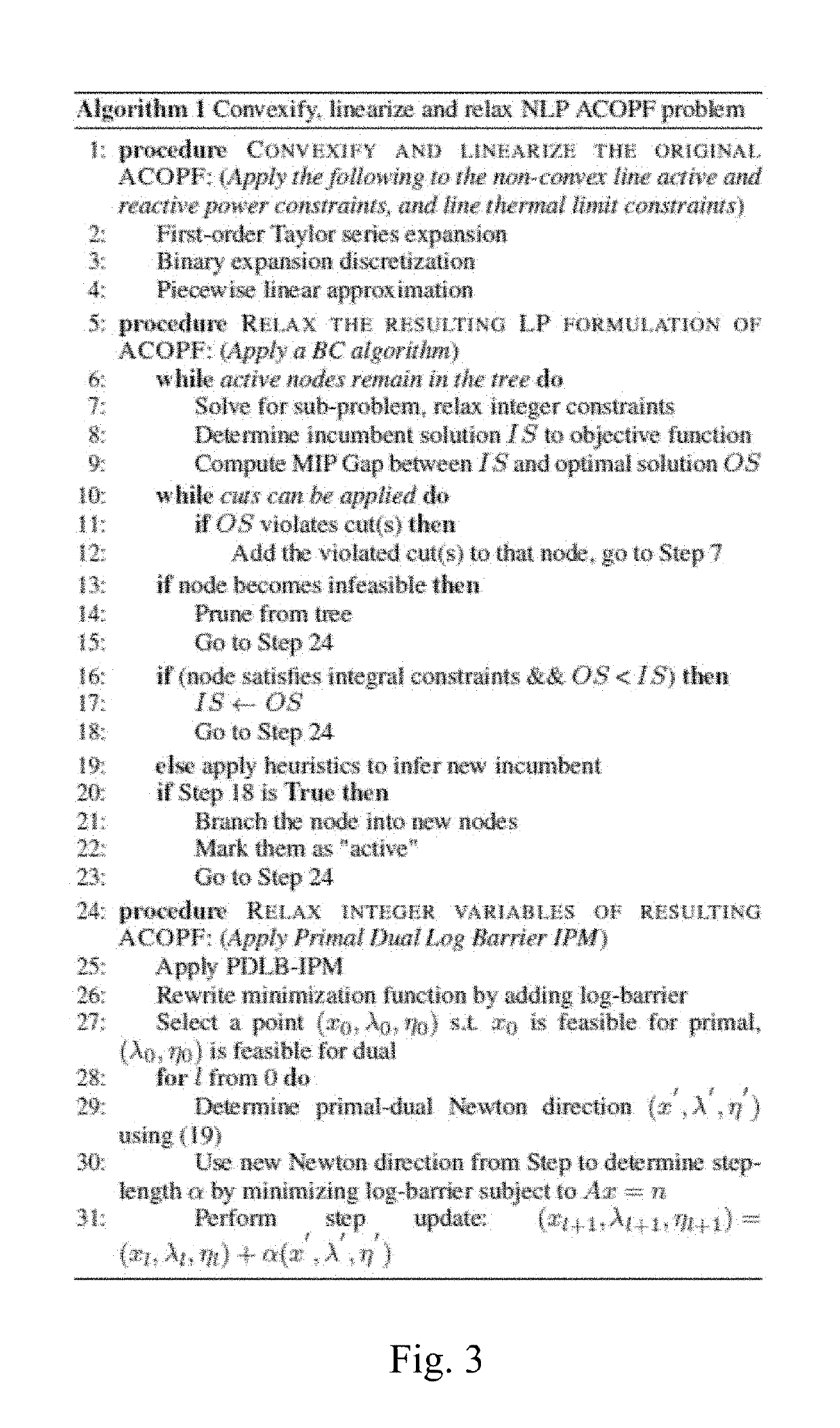Distributed renewable energy grid controller
a renewable energy and grid controller technology, applied in adaptive control, greenhouse gas reduction, instruments, etc., can solve the problems of unreliable overall grid performance, inefficient overall grid performance, and severe threat to the stability of the grid and the availability of power to customers, so as to minimize res curtailment, maximize res hosting capacity, and minimize res curtailment
- Summary
- Abstract
- Description
- Claims
- Application Information
AI Technical Summary
Benefits of technology
Problems solved by technology
Method used
Image
Examples
example 1
[0054]OPF is a general problem formulation that looks for an optimal solution to a specific objective function subject to the power flow and other operational constraints such as generator minimum output constraints, transmission stability and voltage, while satisfying those constraints dictated by operational and physical particulars of modern power networks. The objective functions can either maximize social welfare or minimize generation cost for transmission systems and minimize real power losses for distribution systems. While approximating the ACOPF problem as a linear direct current OPF (DCOPF) might help solving it faster, its solutions will not be applicable for the real-world system which is nonlinear and considers reactive power. Due to this very reason, ACOPF is a complex, non-convex, nonlinear non-polynomial hard (NP-hard) problem.
[0055]The following equations represent the standard ACOPF in polar power-voltage formulation used in power systems, where the objective func...
example 2
[0080]Simulations were conducted on a single machine, an HP laptop with an Intel Core i5-3230M CPU at 2:6 GHz with an installed RAM of 8 GB. The operating system was Windows 8, running on a 64-bit machine powered by x64-based processor. To simulate PDIP-NLP, MATPOWER 5.1, an add-on package of MATLAB, was used. In order to simulate PDLB-IPM and BC-MILP, AIMMS 4.0 was used. Results obtained from the use of two different software applications are still comparable because convergence times and attainment of optimal solutions are dependent on the algorithms used by the solvers, but not the software application powering these algorithms. The values of the objective function solved by PDIP-NLP and PDLB-IPM for different IEEE systems is shown in Table 1 and FIG. 4. Both the methods converge to nearly the same optimal solution, dictated by the %-error margins that range from as low as 0.314% to as high as 46.84% for different systems. The optimized cost is lower for the proposed PDLB-IPM tha...
PUM
 Login to View More
Login to View More Abstract
Description
Claims
Application Information
 Login to View More
Login to View More - R&D
- Intellectual Property
- Life Sciences
- Materials
- Tech Scout
- Unparalleled Data Quality
- Higher Quality Content
- 60% Fewer Hallucinations
Browse by: Latest US Patents, China's latest patents, Technical Efficacy Thesaurus, Application Domain, Technology Topic, Popular Technical Reports.
© 2025 PatSnap. All rights reserved.Legal|Privacy policy|Modern Slavery Act Transparency Statement|Sitemap|About US| Contact US: help@patsnap.com



